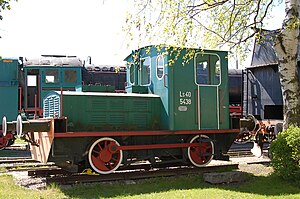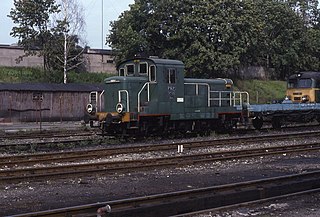
SM30 is a Polish series of diesel shunting locomotives used by PKP and industry, built by Fablok, Chrzanów. They were also used for a local traffic.

The M62 is a Soviet-built diesel locomotive for heavy freight trains, exported to many Eastern Bloc countries as well as to Cuba, North Korea and Mongolia. Beside the single locomotive M62 also twin versions 2M62 and three-section versions 3M62 have been built. A total number of 7,164 single sections have been produced, which have been used to build 5,231 single-, twin- and three-section locomotives.

SM42 is the PKP class for a Polish shunter diesel locomotive for shunting and light freight traffic, built by Fablok in Chrzanów.
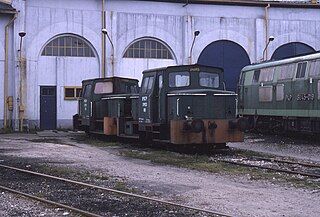
SM03 is the name of a Polish diesel locomotive class in the PKP railway operator designation. The letters SM describe a diesel shunting locomotive.
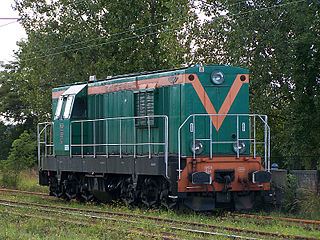
SM31 is a Polish series of diesel shunting locomotives used by PKP and industry.

ET21 is a name for a Polish electric freight locomotive produced between years 1957 to 1971 in Pafawag. It was the first post-war Polish electric locomotive, designed in 1955. Besides being delivered for PKP, ET21 locomotives were delivered to the mining industry, where they are used up to now.

ET22 is a Polish six-axle electric freight locomotive built by Pafawag from 1969 to 1989. Factory designation is 201E. With 1183 units, it is one of the most numerous standard gauge electric locomotive built in Europe. Further 23 units were built for Morocco as E-1000 class.
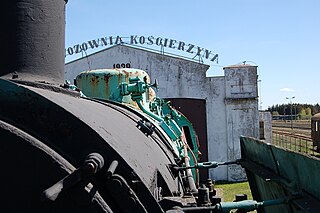
Railway Museum Kościerzyna is a Polish railway museum located in Kościerzyna, Pomeranian Voivodeship. The museum is located in place of a now defunct locomotive depot near Kościerzyna railway station.
The exhibit consists mostly of steam locomotives, but several diesel and electric locomotives, as well as electric multiple units and diesel multiple units are also available for visitors.
Besides rolling stock displayed in the open air, inside the shed visitors can also see several exhibitions of machines and devices connected with Polish railway history.
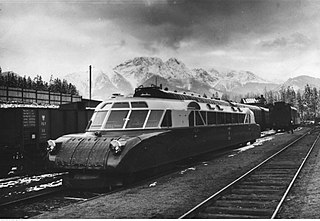
Luxtorpeda – a popular name of the famous Polish railcar from the 1930s.

Fablok is a Polish manufacturer of locomotives, based in Chrzanów. Until 1947 the official name was First Factory of Locomotives in Poland Ltd., Fablok being a widely used syllabic abbreviation of Fabryka Lokomotyw, among others as the company's telegraphic address. It is now named "BUMAR - FABLOK S.A. (corporation)". Fablok is located in the town of Chrzanów in Lesser Poland. As of 2009, Fablok no longer builds new locomotives.
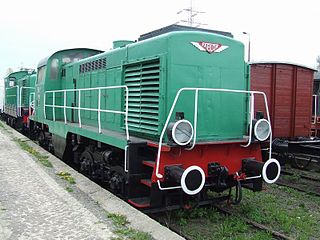
The SM15 is a Polish diesel shunter used by PKP and industry — where it carried the designation Ls750H. It is based on the Soviet ТГМ3 (TGM3) locomotive.

The SM25 is a Polish series of diesel shunter used by PKP.
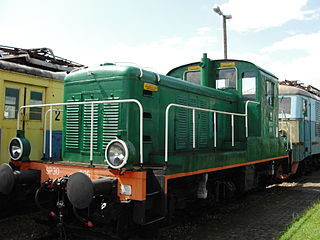
SP30 is a Polish series of diesel passenger locomotives used by PKP.

SP32 is a Romanian series of diesel passenger locomotives used by PKP.

The Fablok T3A also known as TKh49 or Ferrum 47 / 724 is a class of Polish steam industrial tank locomotive. It was built by Fablok in 1948-1961 years.

Kolzam RegioVan – a series of railcars produced in Poland, produced by Kolzam in Racibórz in 2003–2005 and by Fablok in Chrzanów in between 2011 and 2012. Kolzam jointly produced: two single units and 10 double units, the eleventh railcar was produced by Fablok. There had not been any triple units produced.
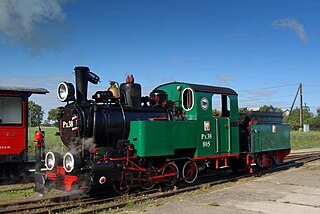
Px38-805, named Leon, is a preserved Polish 600 mm narrow gauge steam locomotive built by Fablok in Chrzanów, Poland. It was the only locomotive of PKP class Px38, and one of three built locomotives of Fablok W5A type.

The PKP class Lyd1 is a narrow gauge diesel locomotive class, covering two similar models built in Poland: WLs150 built by Fablok, and its development WLs180 (803D) manufactured by Zastal. It was used by Polish State Railways (PKP) on the narrow gauge railways in Poland, and on industrial railways.

The WLs40 and WLs50 are narrow gauge diesel locomotives built in Poland, used mostly on industrial railways. A small number was used by Polish State Railways (PKP) as Ld1 class on narrow gauge railways in Poland.
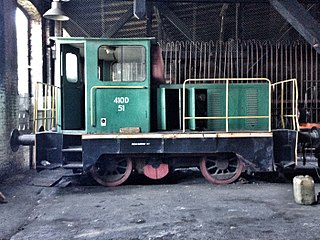
The Zastal 410D is a diesel shunting locomotive produced by Zaodrzańskich Zakładach Przemysłu Metalowego im. M. Nowotki in Zielonej Górze. Designed to perform shunting operations on industrial sidings, a total of 51 examples were produced from 1973–1975.
